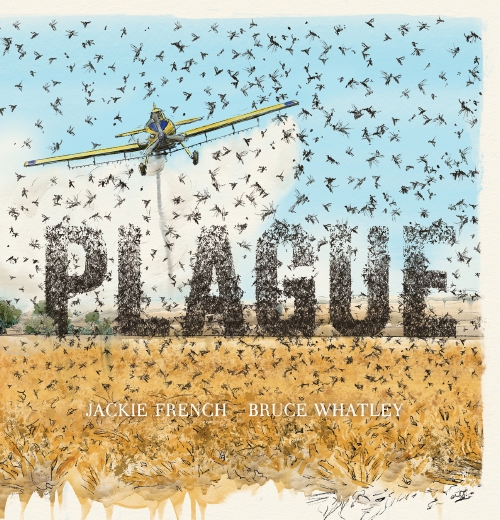This a heartfelt lament for the country, a plea for people to think about how we use the land and the consequences that come from humans trying to control and impose themselves upon nature, upon the land. Told from the locust’s perspective the story opens showing the land in balance, a delicate relationship between humans, Australia’s First Nations people, animals, birds and the locusts.
Then the white settlers came and this delicate balance was destroyed. The White Ibis who had kept the locusts in check were forced into the cities to become urban pests—the infamous ‘bin chickens’ scavenging food from rubbish bins. Without this natural control the locust population exploded and ravaged everything in their path—the crops, the gardens, even the washing, leaving nothing but bare earth. Humans fought back, spraying poison from the air killing most but not all of the locusts. Those left just waited till next season. But the land was poisoned and animals and birds died.
The message is reinforced by Bruce Whatley’s memorable digital watercolour illustrations. The sight of dead birds with a crop-dusting plane flying overhead is powerful as is the vision of hands holding dead locusts and the vibrant green of the grasses on the endpapers. The artwork adds layers to French’s sparse and eloquent words. This is a plea for a return to a balanced approach to nature, to look at the devastation being caused and to seek safer, more effective and gentler systems that work with the land and nature, not against it.

